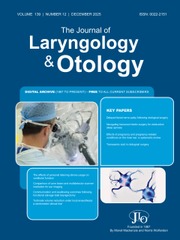No CrossRef data available.
Article contents
Cocaine use in sinonasal surgery: patients’ perspective on its use and the need for pre-operative consent
Published online by Cambridge University Press: 08 May 2024
Abstract
Intranasal cocaine is commonly used in endoscopic sinus surgery due to its vasoconstrictive and anaesthetic properties. This study aimed to understand patients’ perspectives and whether patients should have to give their consent for its use.
Prospective data were collected over a three-month period in ENT departments in the out-patient setting of two district general hospitals. An anonymous questionnaire was distributed to all adult patients asking for their thoughts on cocaine use in sinonasal surgery and the need for peri-operative discussion.
In total, 123 patient questionnaires were analysed. It was found that 9.8 per cent of patients knew of cocaine use in sinonasal surgery, 73.2 per cent of patients stated they would like a pre-operative discussion on cocaine use before surgery and 83.1 per cent of patients raised concerns over cocaine's illicit status, mainly its effect on work and driving. Only 34 per cent of patients said that they would prefer an alternative to cocaine.
This study found that patients want to know if and when cocaine is being used intra-operatively without necessarily objecting to it.
Keywords
- Type
- Main Article
- Information
- Copyright
- Copyright © The Author(s), 2024. Published by Cambridge University Press on behalf of J.L.O. (1984) LIMITED
Footnotes
Justin Yeo takes responsibility for the integrity of the content of the paper


